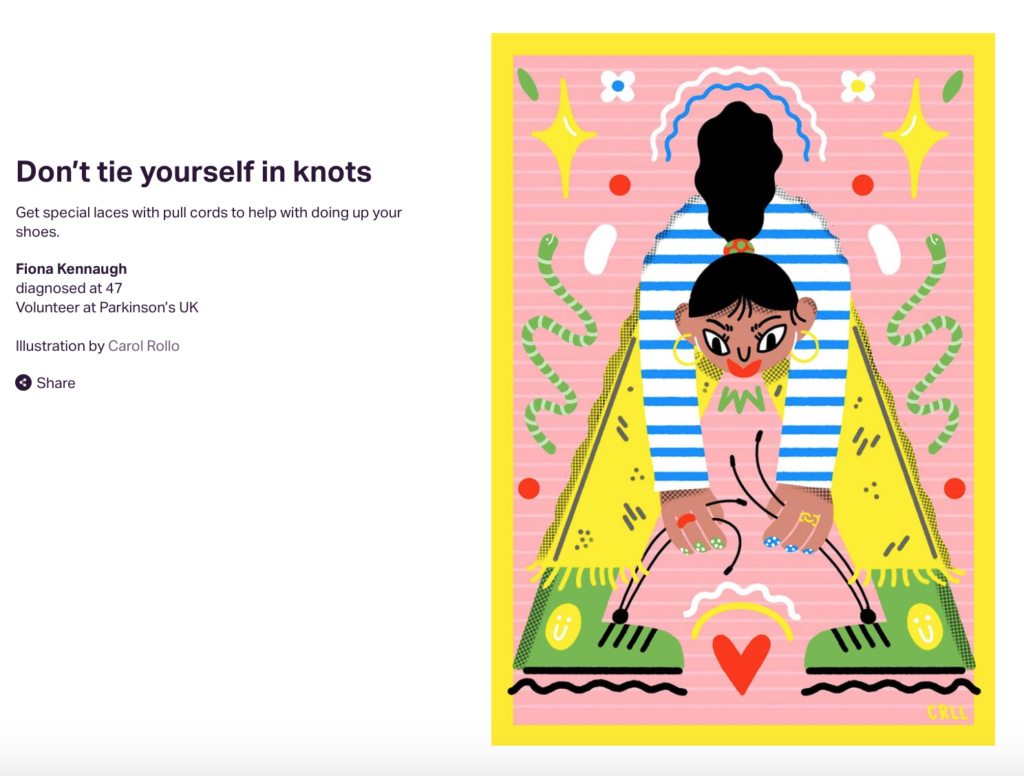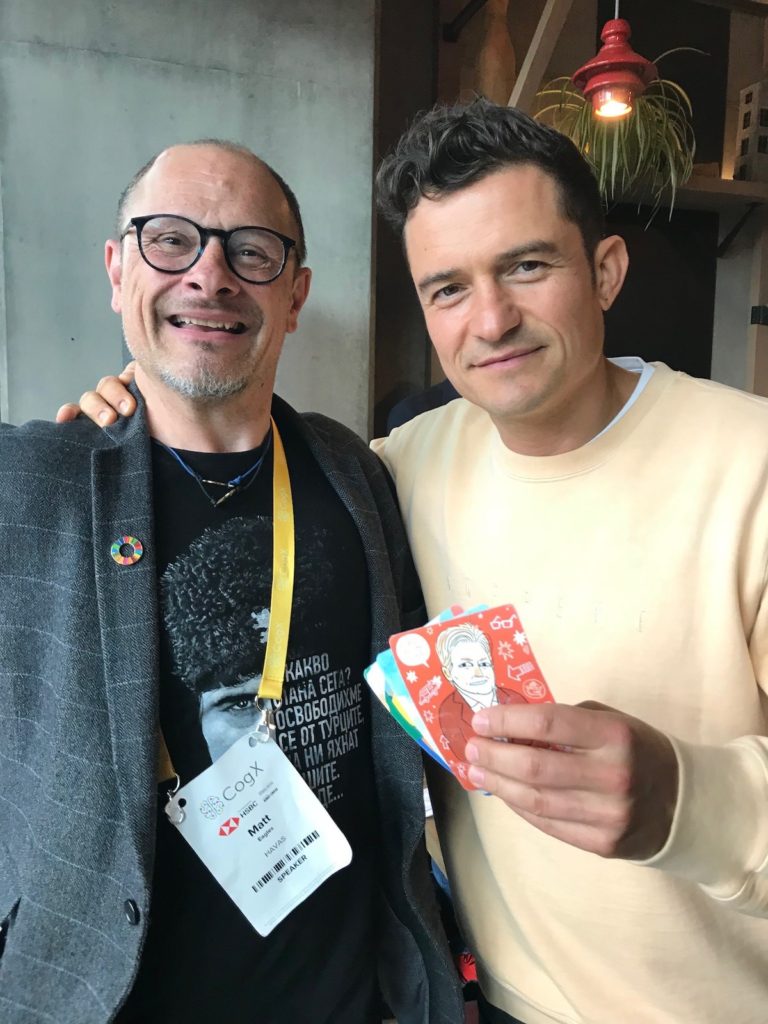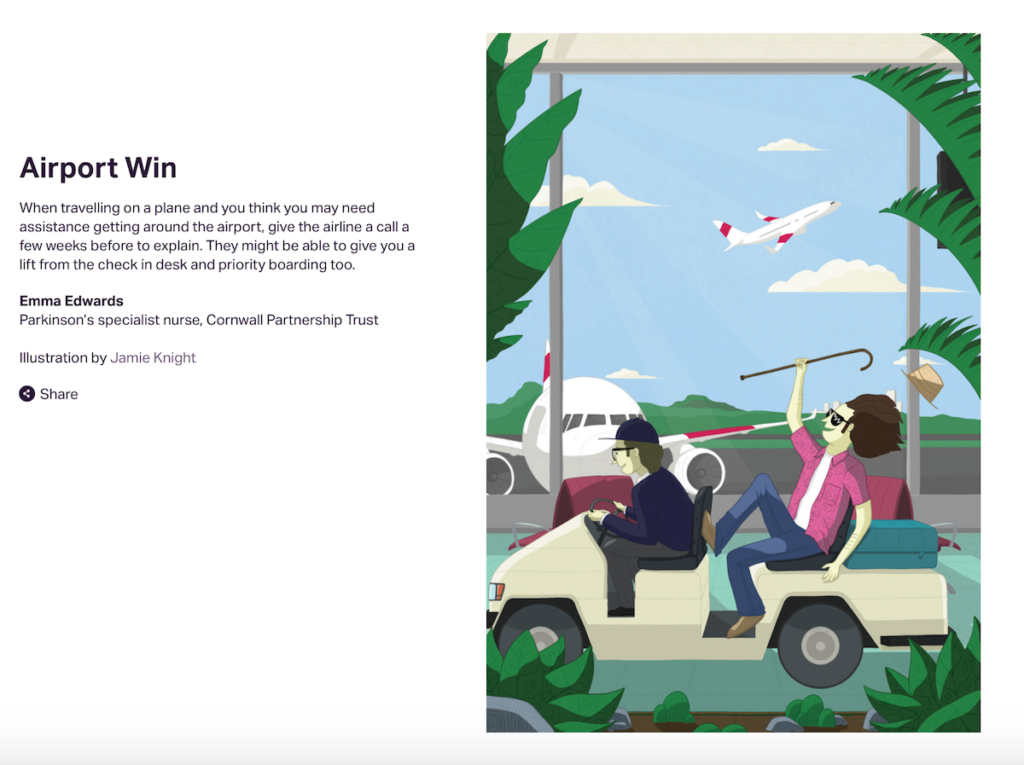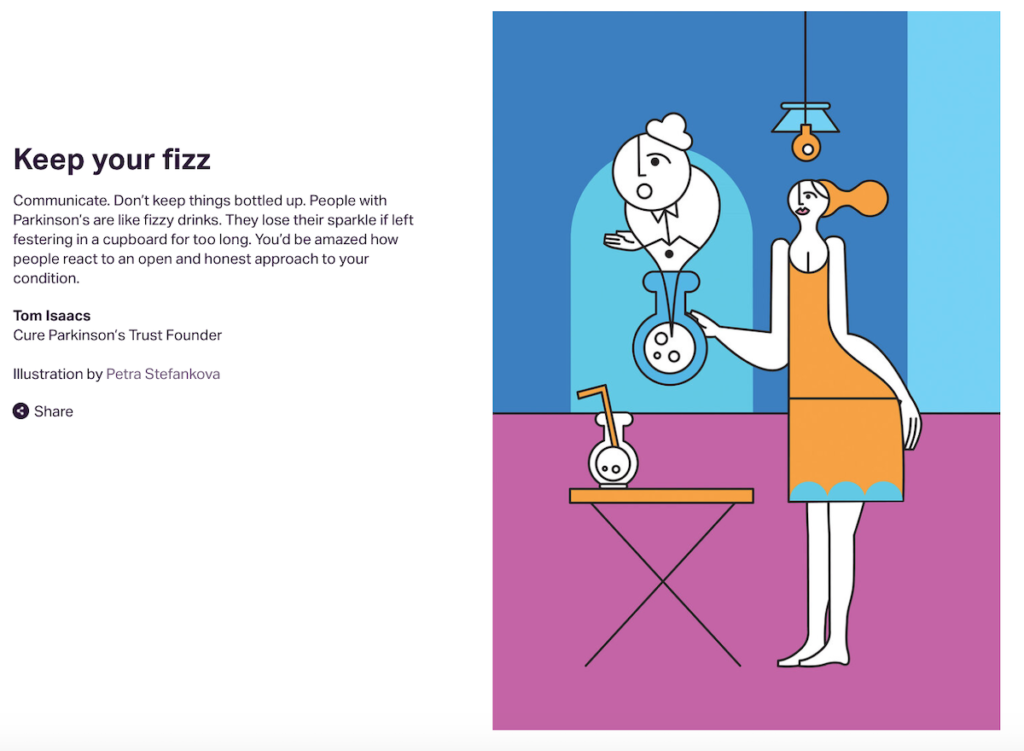One thing that I really wanted to start doing on my blog in 2020 is to feature organisations and brands that are doing awesome things across the disability community.
There are so many different disabilities out there, and I tend to find it’s quite easy to stay in online spaces that are quite similar to my own.
I mean, it’s understandable, really. But every week, I’m discovering more and more work that is teaching me so much – and I think many of these things could be a great addition to my feature interview series.
Don’t worry, I’m still going to be creating lots of chronic illness-related content and doing more of what I’ve been sharing over the last few months.
I have lots of plans to work with experts this year to make things that I hope can be as helpful to people as my Pacing series appears to have been (part 2 coming soon!). Nothing is changing, it’s just a few new things are being added in, too.
I hope that by expanding out who I interview, I can help to raise awareness of conditions that we may not know much about, learn from each other, and to help grow cross-community support for disabilities other than our own.
So, let’s get to it!
In today’s post, I had the opportunity to interview Matt Eagles, founder of Parkylife – an organisation which is bringing a whole lot of colour to people living with Parkinson’s.
We’ll learn more about Parkylife and their Parkycards, as well as more about Parkinson’s – from someone who has lived with it since they were 7. And why it’s so much more than “an old shaky man stooped over a walking stick.”
Hi Matt! Let’s start off with the basics, shall we? What is Parkylife?
Parkylife is a lifestyle choice, but principally it’s a wellness and education tool.
It was originally designed for those newly diagnosed with Parkinson’s and their families, but it has quickly become apparent that it is relevant to everyone within the Parkinson’s community: patients, nurses, carers, consultants, junior doctors, occupational therapists, physiotherapists, speech therapists etc.
It’s now a website, a pack of cards, an Instagram and Twitter account, and tattoos x 2 (both on my lower right leg).
It puts a smile on everyone’s face and makes them feel better about themselves – even if they don’t happen to have Parkinson’s.
It really shows that people ‘get’ what we’re trying to do – which is turn a potentially awkward situation into a Parky win!
What is the purpose of Parkycards?
Parkycards are there as little reminders that where there is darkness there can be light.
They are the little doses of positivity that aren’t prescribed by a GP or a Consultant when you are given a Parkinson’s diagnosis. They are also a reminder that you can be positive despite being living with a chronic, degenerative neurological condition.
Can you explain a little bit about Parkinson’s to people who don’t know much about it?
Parkinson’s is a chronic degenerative neurological condition which usually affects older people, and can be characterised by a tremor, unsteady gait, slowness of movement, loss of balance, masked face, and slurred speech.
However, everyone experiences Parkinson’s differently, and there are over 40 listed symptoms. People often get accused of being drunk as the symptoms look very similar.
Why did you decide to start Parkylife?
The whole process began with myself and Lou Shipley, a creative director at Havas Lynx, having a casual chat and throwing round a few ideas.
One of the ways I deal with my Parkinson’s is by writing amusing anecdotes about situations that have happened to me.
I also re-wrote lyrics to Parklife by Blur and renamed it Parkylife and Lou did some sketches* of what was to become the Parky Pants Dance Parky Card after the issues I told her I had getting dressed in the morning!

*Lou is a talented creative and I was fascinated by her fabulously funny sketches on her Instagram account @I_draw_tinder in which she parodies men she has come across on the app.
Originally Parkylife was going to consist of funny stories and illustrations, but once we realised the significance of what we had just done, it became so much more!
Everything has been done and sourced for free with illustrators being found by our Exhibitions Curator Sophia Shaw, and briefs being sent and written by one of our chief copy writers Angus Prior.
Nicola Fletcher liased with printers and design director Rob Jenkins oversaw the design and feel of the packs and cards themselves with input from me.
The vast majority of stories, hacks, tips, and ParkyPeeps have been collected and suggested by me using my knowledge of the global community at large.
Why is design such an important part of this project?
Traditionally, Parkinson’s has been viewed (and to a large extent still is viewed) by the general public as an old shaky man stooped over a walking stick.
This is so outdated and irrelevant, particularly to the women who have been diagnosed. It provides no hope, and it implies no progress from James Parkinson’s essay The Shaking Palsy, which was written over 200 years ago.
Sadly this view is perpetuated by academics and students alike, and without disruption from projects like Parkylife, things are unlikely to change anytime soon.

What has the impact of Parkylife been so far?
The response on a global scale has been amazing – from Consultants and Parkinson’s disease Nurse Specialists, to Speech Therapists, Carers, and of course people with Parkinson’s, we’ve not had one bad word or review!
I have personally taken Parkylife from Japan to Chicago, and many many countries in between. The demand to be a ParkyPeep has been phenomenal, with Consultants teasing one another about who had a card and who hasn’t…yet!
You’ve had Parkinson’s since you were 7 – can you tell me a bit about what life was like growing up with it, and what are some of the biggest misconceptions about Parkinson’s?
The biggest misconception about Parkinson’s is that it is only a disease that old people get.
Yes, a certain percentage of people will develop Parkinson’s, as brain cell death is inevitable. But many are younger, and it’s rarely diagnosed as such, which leaves many in limbo for years until they are deemed old enough to develop the disease of old people.
My earliest memories of what I was later to learn was Parkinson’s was my loss of balance and the spasticity in one arm, which looked like I was part T-Rex!
I kept falling backwards in my school assembly and I found during my swimming lessons my legs would sink, and I would almost be trying to swim whilst in a standing position.
I used to stand on one leg while my mother cut my toenails and one day I couldn’t balance and she kept shouting at me, and slapping me in frustration. I started crying, not because it hurt but because I didn’t know why I couldn’t stand still. My dad and godfather used to shout at me when I was playing rugby because I couldn’t keep up with the other lads…they thought I wasn’t trying.
At this stage my speech wasn’t an issue, although to my mother and father who already had me down, even at this early stage in my school career, as a high flying lawyer thought my Northern accent most definitely was! I had to enunciate properly and as a result I was enrolled at a speech and drama school to rid me of this Northern Curse.
I was forced to learn and recite poetry by heart and was entered into Speech and Drama Festivals all over the North West of England. As I was unable to stand and recite the poems, I sat down on a chair in front of an expectant audience and then waited as the judges passed their verdict – I guess it was like Britain’s Got Talent but without Simon Cowell and the phone vote.
I was reasonably successful and my crowning moment was when I won a trophy for my interpretation of Noah and the Rabbit by Hugh Chesterman .
When I wasn’t learning my poems, I was usually in hospital as the medical staff struggled to identify the strange symptoms I was exhibiting. Monday to Friday I spent on the ward being tested and assessed, and at the weekends I was allowed home.

A breakthrough in communication on my part came after visiting a doctor at the Manchester Royal Infirmary. He offered me 50p if I agreed to try a particular medication – now he was talking my language – I agreed and quickly stuffed the coin into my pocket!
The medication I was prescribed was L-dopa, Sinemet, a drug proven to help elderly patients cope with the on-set of Parkinson’s Disease. It worked to an extent, but as I entered my teens I was referred away from the safety net that I had got used to at Booth Hall to a hospital in London that specialised in Movement Disorders.
Under the specialist care of Professor David Marsden and subsequently Professor Niall Quinn, I became the patient of choice in teaching seminars, which included invited doctors and students from all over the world.
I knew the drill, I knew the questions they were going to ask and I knew the tests they would perform. I actually felt quite smug and wore a huge grin during these seminars, happy in the knowledge that I knew more than them about my condition, that I was the expert.

How does Parkinson’s impact you day-to-day?
Parkinson’s can and indeed does affect every aspect of my daily life.
My first job is getting out of bed – a task many people don’t even have to think about. Normally it involves a kind of roll or flop onto the pillow I’d thrown out of bed during the night, accompanied by a thud so my wife knows I’m out of bed without me having to tell her.
Not very dignified I know, but it works!
Once in the bathroom I am careful to use all the aids I now have in place by the toilet and in the shower.
The shower can ultimately be a source of mirth if a passer by ever saw me (fortunately they don’t) trying to catch my balance like a first time contestant on dancing on ice , trying not to fall over.
I regularly cut myself shaving, and fall off the bed whilst getting dressed. Even ‘stepping’ into a pair of underpants presents real issues and I’ve found myself rolling on to the floor, one leg in and one leg out, rather amusing to watch according to my wife!
Once in the kitchen, I regularly find myself spilling milk and sometimes the whole drink all over the work surface.
Doing up shoelaces is a nightmare, and trying to eat sometimes just becomes impossible, as I cannot get the food onto the cutlery to put it in my mouth – and even if I do, getting the cutlery actually anywhere near my mouth is a challenge. All everyday tasks that people take for granted, just like speaking. But this wasn’t always the case.
This is #myeveryday – it might sound horrible and all of the above can be incredibly frustrating and stressful, which in turn affects my speech, but it’s still so much better than I would have been had I not had Deep Brain Stimulation Surgery.

How do you navigate working with Parkinson’s?
Now I work three days a week in Manchester, but because I’ve never worked without Parkinson’s, its never really been a problem. I am always very open and have never hidden my symptoms.
I know it’s a strange thing to say, but growing up with Parkinson’s and all that it entails has made me a better, more empathetic person, able to navigate my world with compassion.
I dread to think where I would be without it. In effect Parkinson’s has given me wings to fly!
What can we expect from Parkylife in the future?
Parkylife as a global movement is growing by the day, and in the future we hope to have cards and merchandise available in multiple languages to cater for different cultures and faiths around the world.
We already have plans in place for cards in Hebrew, Danish and Spanish.
If people wish to get involved they can email us at hello@parkylife.com or contact me directly matt.eagles@havas.com.
Thank you so much to Matt for taking the time to answer these questions today! You can find out more about Parkylife, get a free pack of Parkycards, and visit them on Instagram and Twitter.
If you enjoyed this post, please consider subscribing to my newsletter.


I am glad that Matt Eagles has some positiveness towards Parkinson’s even if it has been hard for him since he was a little boy. He has done very well with it.
Thanks Silvia ! That’s very kind of you to say so .
kind regards
Matt